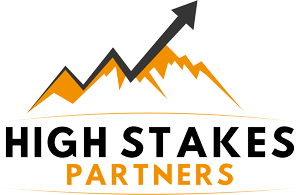Startups in the defense industry are exciting, nimble, and very responsive to customers. So much so that some of these companies have the potential to grow quickly. These growing companies must effectively navigate many critical pivots if they are to continue to succeed.
While some of these critical pivot points can come early, say after you’ve grown to 10 or 15 employees, many start in that 30-50 employee range. In the beginning, you see a handful, even just a couple, of people, wear many, many different hats. This is not only normal but healthy. It can be one of the attributes that make these young and upstart companies fun and successful. Very little red tape and it’s hard to miscommunicate between functions when it’s the same person wearing each hat! It can be a very frenetic and hectic time for the founders and the early employees but when it works it is magic.
As you add more employees and customers, complexity begins to multiply. This is good. It’s what you were striving for. Many things don’t scale though. Often when a growth spurt hits you find yourself behind and late to adjust. They are not only difficult to do on the fly but are complicated by needing to do many at one time. So, it’s good to anticipate growth if that’s in your business plan and have a roadmap of things you will need to mature just before or as you hit these gates.
“The entrepreneur always searches for change, responds to it, and exploits it as an opportunity.” Peter Drucker
A phrase I use to describe these maturations of functions, systems, processes, is “Professionalization”. This is the process of taking an excellent streamlined startup function and making it work at scale. You may need to do this several times for some functions as there is typically a spectrum of complexity. It’s not just Tiny and Big. One piece of advice I would have is to not try too hard for extra credit in this process. Don’t remove the magic of your startup by adding unneeded processes too early. Embrace that time but plan for when it will be needed. And be ready. Professionalizing comes with a lot of side effects. Some are not necessarily positive. Knowing these and the roadmap will help you mitigate those negative byproducts. Examples of some of those are: extra cost, impacts on culture, speed to decision making, customer responsiveness, new cooks in the kitchen, etc. These come with the territory but can be managed with a deliberate plan.

Over the next handful of blogs, I will be addressing some of the many areas that may need to be professionalized as you grow. There are many areas, and every company will hit gates at a different rate. Some of them will need to be addressed simultaneously though. Remember that you will have to accomplish this all while trying to manage the everyday chaos of running your company. These blogs will not necessarily provide a detailed blueprint for each professionalization. Situations are too different and individual choices and vendors have too much subjectivity in them. That said, I will be happy to discuss, individually, the choices we did make on our journey and why. For these blogs, I am going to address the higher-level items and framework you should consider for each of the functions. There will be some lessons learned and gotchas sprinkled in there with the meat.
“Leadership is your ability to hide your panic from others.” – Laozi
Some of the topics we will be discussing are broken into the following areas. I may adjust some based on requests or feedback:
- Corporate infrastructure
- Leadership, management, and culture
- Business development and marketing

Corporate infrastructure relates to how and when you mature and professionalize your functions such as:
- Finance and Accounting to include rate development and DCAA concerns (this is a very important and deep topic).
- Human resources to include HRIS system adoption, benefits, retention, recruiting, training, hiring, and firing practices.
- Contract administration, subcontract management, purchasing, Government-owned material management, and DCAA issues
- Information Technology. This can have a very diverse spectrum of needs depending on your company. Some companies have very important in-house compute capabilities to support software development and productization. Others have an IT footprint primarily dedicated to allowing the staff to communicate and collaborate.
- Legal and professional growth. As complexity is added to your company the importance of good policies, procedures, workflows, delegations of authority, and other risk mitigations become critical. These inflection points will depend on what type of company you are and what your service offerings are.
- Security is a multi-dimensional family of needs that may be critical to your success. This will include personnel security that comes with Classified work to physical security if you have facilities. An ever-growing adjacent need is Information Security. There’s not a day that goes by that you don’t read about more companies getting hacked and compromised in various costly, sometimes even existential ways.
- Facility management for those that have an increasing amount of leased or owned office space.
- Knowledge management to help facilitate the extraordinary increase in your company’s information and the workflows need to utilize it.
- Many more.
Leadership maturation is an ongoing constant process not necessarily measured by gates. It is true though, a 10-person company should manage and lead in different ways than a 30-person company, then a 75-person company, etc. We touched on some of this in the interview with Kate Ripp. Some considerations we will discuss are:
- Adding new leaders as well as adjusting the focus of our existing ones. Often this includes a slight narrowing of the number of hats each person has.
- Middle management!!?? Yes, we love flat organizations but too many companies hurt themselves and their growth path by hanging on to that structure too long. It’s one part inertia and one part a loathing of bureaucracy. With a vision and some training, this can be a great modification to your organization structure.
- Culture changes. A vibrant and growing company will go through many different phases of culture as it becomes bigger and bigger. It is possible to keep a common thread through these changes to ensure it’s a place people want to be and a company you want to partner with.
- Communication – one-word, huge ramifications. Fi this was pass-fail, we’d all fail. How can we continue to communicate after we’re too big to all go to lunch together?
- Governance to include Board level oversight and advisory help.
The Business Development engine is also a constantly progressing set of functions. They are very tailored to your business models, business strategies, and personal goals. Some good professionalization discussion topics are:
- Business development processes and people to include systems to help such as CRM tools and related.
- Proposal support changes as you begin going after more and bigger efforts. Often what works well early has little to no chance of scaling. How do you anticipate and choose where to invest? Becoming a prime contractor can rock your world in so many good and difficult ways.
- Branding and marketing tactics are concepts I am passionate about, but you have to be careful not to overdo that too early. Focus on getting substance as a company and then follow that up with a brand and marketing professionalization. This includes a good social media and web presence as well as a public relations strategy.
Companies that are heavy into product development, both hardware, and software, have many additional challenges. We’ll touch on some of these as well. This includes:
- R&D strategies
- Establishing investment budgets, when is IR&D a good plan?
- IP protection, with nuances geared around the defense industry
- Development infrastructures including cloud or server-based DevOps environments, manufacturing, inventory concerns, etc.
So that’s a lot of topics. The main goal isn’t to provide a recipe to copy down and follow. Good thing! You wouldn’t do that anyway. That’s why you started your own company. The actual goal is to provide an experienced and solid framework that allows you to build a plan based on your specific situation, personality, and business models. We’ve been through each of these personally and made many mistakes. Some costly. But in the end, successfully. You’ll make mistakes too. That comes with taking this less traveled and less deterministic path. Hints on what to look out for can’t hurt though, right?
“We generate fears while we sit. We overcome them by action. Fear is nature’s way of warning us to get busy.” Dr. Henry Link
Stay tuned for the next chunk of discussions. If you have areas not discussed above that you think you will need to professionalize, drop us a note. If we have experience in it, we’ll add it to our list!


